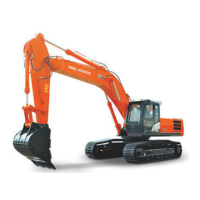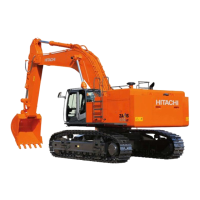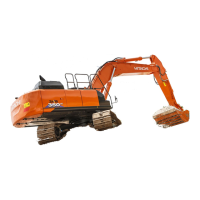MAINTENANCE
7-75
Check Electrolyte Specific Gravity
--- every month
d
WARNING: Battery gas can explode. Keep sparks and
flames away from batteries. Use a flashlight to check
the battery electrolyte level.
Sulfuric acid in battery electrolyte is poisonous. It is
strong enough to burn skin, eat holes in clothing, and
cause blindness if splashed into the eyes.
Never check the battery charge by placing a metal
object across the posts. Use a voltmeter or hydrometer.
Always remove the grounded (-) battery clamp first
and replace it last.
Avoid hazard by:
1. Filling batteries in a well-ventilated area.
2. Wearing eye protection and rubber gloves.
3. Avoiding breathing fumes when electrolyte is added.
4. Avoiding spilling or dripping electrolyte.
5. Using proper booster battery starting procedures.
If you spill acid on yourself:
1. Flush your skin with water.
2. Apply baking soda or lime to help neutralize
the acid.
3. If splashed in eyes, flush with water for
10 to 15 minutes. Get medical attention
immediately.
If acid is swallowed:
1. Do not induce vomiting.
2. Drink large amounts of water or milk.
3. Get medical attention immediately.
IMPORTANT: Check the specific gravity of the
electrolyte after it is cooled, not immediately
after operation.
Checktheelectrolytespecificgravityineachbattery
cell.
The lowest limit of the specific gravity for the
electrolyte varies depending on electrolyte
temperature.Thespecificgravityshouldbekept
within the range shown below. Charge the battery if
the specific gravity is below the limit.
Recommendedrangeofspecificgravitybyelectrolytetemperature
40 °C
(104 °F)
1.21 1.22 1.23 1.24 1.25 1.26 1.27 1.28 1.29 1.30 1.31 1.32
Specificgravityofbatteryfluid
Fluid temp.
20 °C
(68°F)
0 °C
(32°F)
–20°C
(–4°F)
–40°C
(–40°F)
WorkingRange

